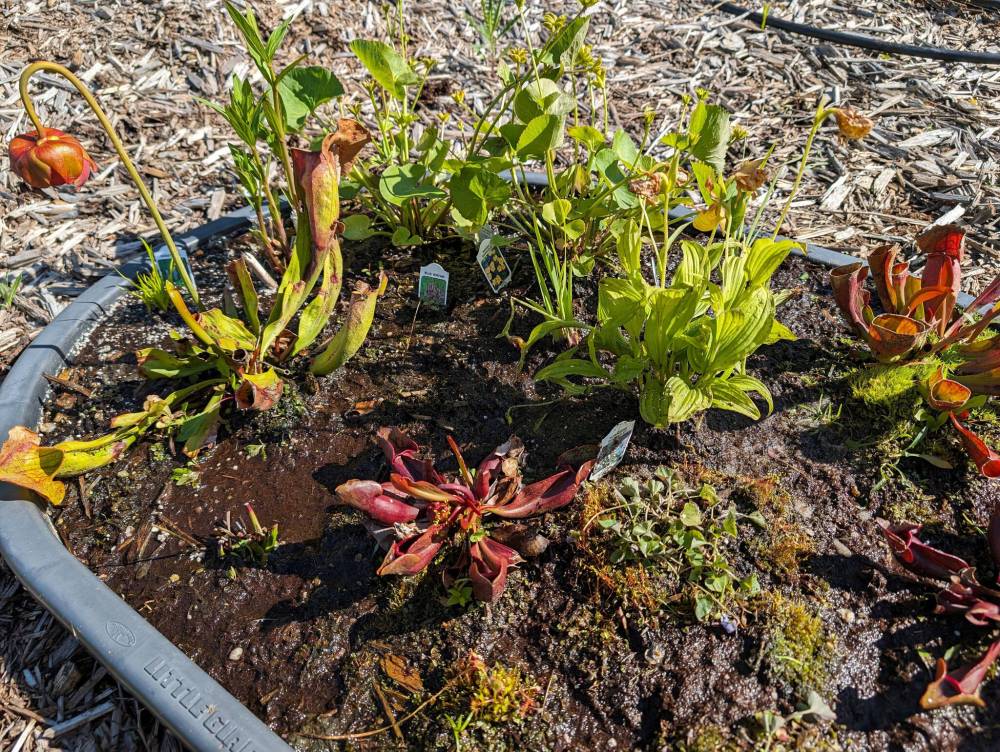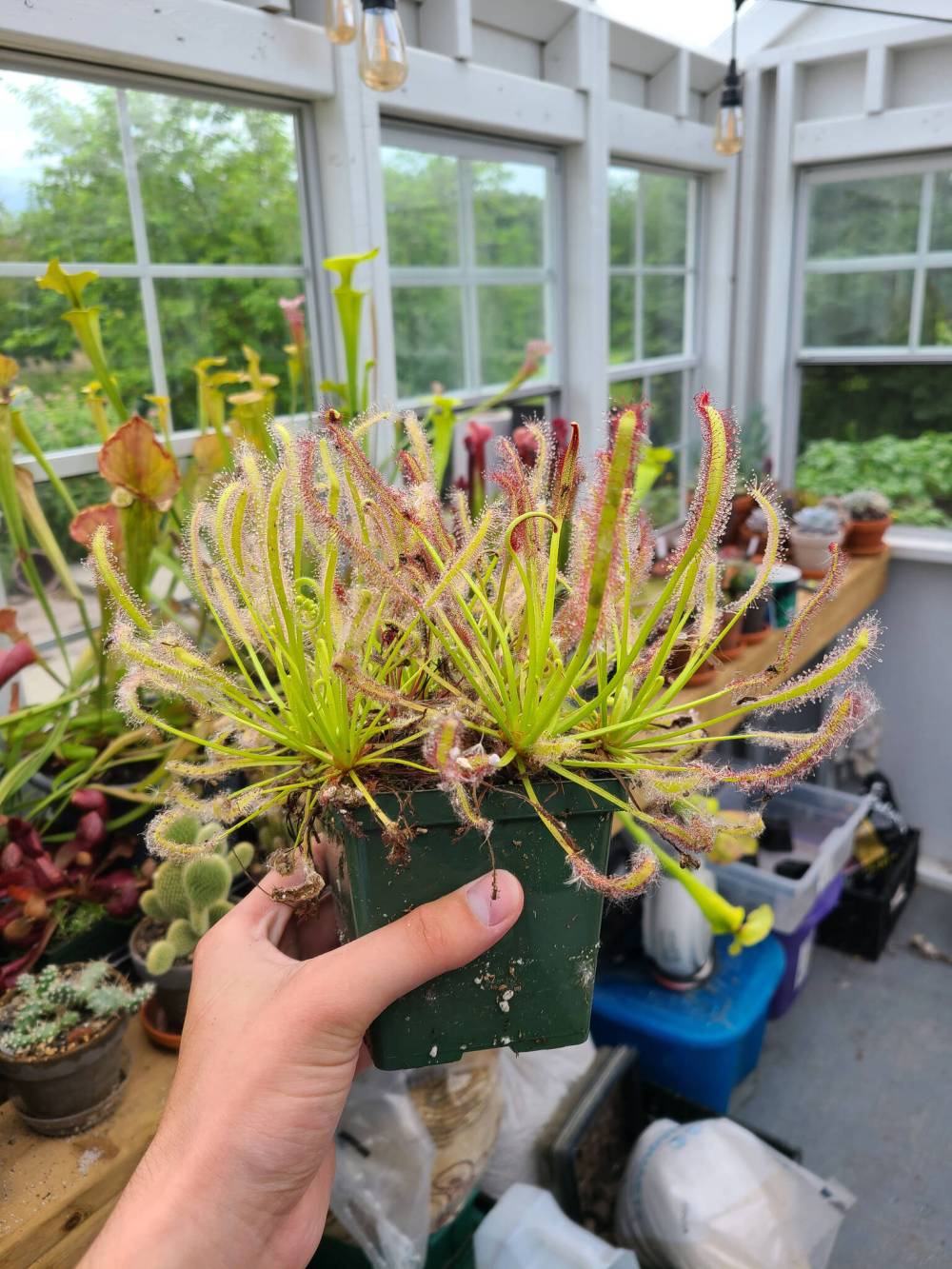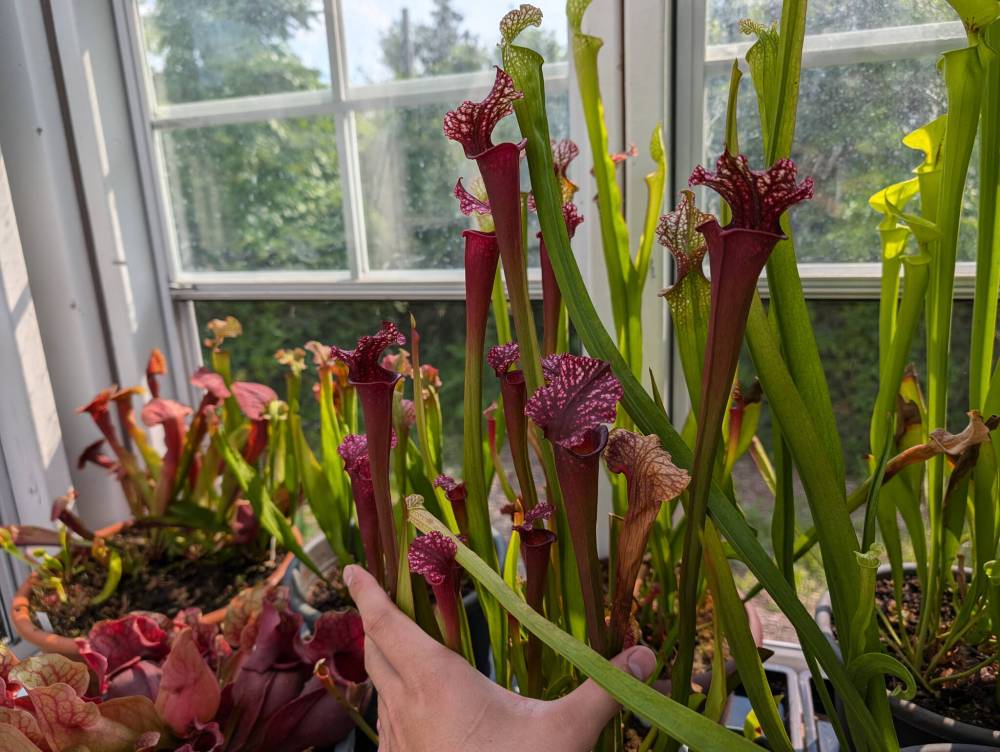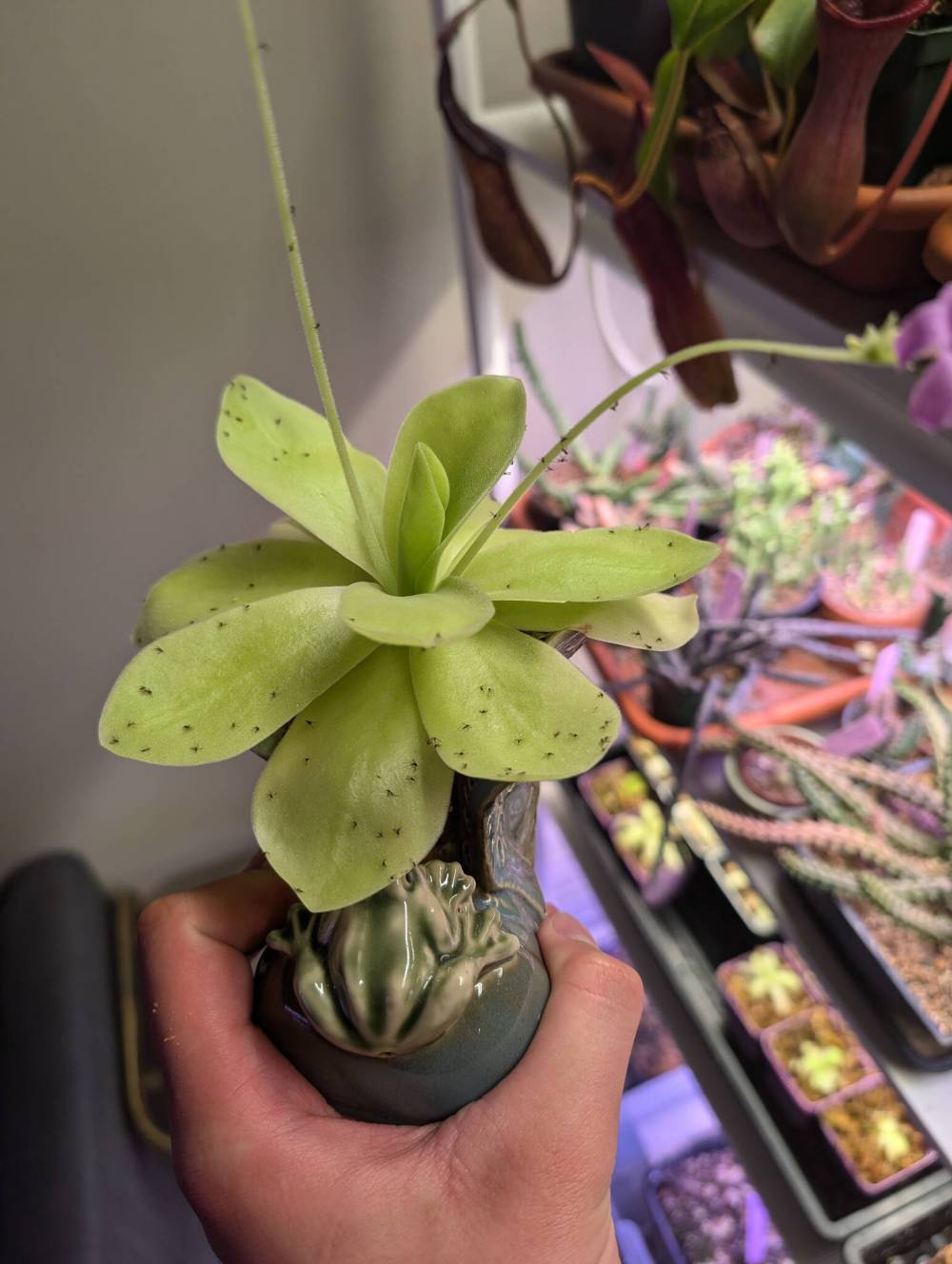Predator plants
Carnivorous flora fascinating and beneficial, too
Advertisement
Read this article for free:
or
Already have an account? Log in here »
To continue reading, please subscribe:
Monthly Digital Subscription
$1 per week for 24 weeks*
- Enjoy unlimited reading on winnipegfreepress.com
- Read the E-Edition, our digital replica newspaper
- Access News Break, our award-winning app
- Play interactive puzzles
*Billed as $4.00 plus GST every four weeks. After 24 weeks, price increases to the regular rate of $19.00 plus GST every four weeks. Offer available to new and qualified returning subscribers only. Cancel any time.
Monthly Digital Subscription
$4.75/week*
- Enjoy unlimited reading on winnipegfreepress.com
- Read the E-Edition, our digital replica newspaper
- Access News Break, our award-winning app
- Play interactive puzzles
*Billed as $19 plus GST every four weeks. Cancel any time.
To continue reading, please subscribe:
Add Free Press access to your Brandon Sun subscription for only an additional
$1 for the first 4 weeks*
*Your next subscription payment will increase by $1.00 and you will be charged $16.99 plus GST for four weeks. After four weeks, your payment will increase to $23.99 plus GST every four weeks.
Read unlimited articles for free today:
or
Already have an account? Log in here »
Hey there, time traveller!
This article was published 26/10/2024 (359 days ago), so information in it may no longer be current.
There’s a fascination with plants that eat bugs.
“Normally we don’t see that in our day-to-day life,” says Andrew Gierys, a self-described carnivorous plant addict. His first encounter with such plants was at age 7 when his family visited Blue Lake in Ontario, and he saw carnivorous plants in a bog.
“I tried growing a Venus flytrap when I was nine or 10 but wasn’t successful,” he says. Nevertheless, his interest was piqued and he continued to research how to grow carnivorous plants. In spring 2020, just as Manitoba went into shutdown due to COVID, Gierys bought his first Pinguicula, a carnivorous plant commonly known as butterwort. “Having something to grow during that period was really helpful,” he says.

photos by Andrew Gierys photo
Andrew Gierys, of the Manitoba Carnivorous Plant Addicts group, with Sheena Buckner at the St. Vital Agricultural Society fair this past August.
Today his indoor plant collection has grown to include more than 150 species of Pinguicula. “Pinguicula can be hard to pronounce so we call them pings,” says Gierys. His favourite type of butterwort is the Mexican butterwort. His grow shelves also include dozens of succulents and cacti as well as orchids and hoya plants. Gierys keeps track of his expanding plant collection on a spreadsheet. “I’m a huge plant lover and nerd,” he says.
Gierys, 25, is a student at the University of Manitoba where he is currently working toward his PhD in microbiology. He is one of the administrators of Manitoba Carnivorous Plants Addicts, a Facebook group, and sells pings on Instagram at andrews.sticky.leaves. He also attends shows such as the Manitoba Orchid Society’s Spring show and the St. Vital Agricultural Society’s annual fair where his plant displays attract many people who are new to carnivorous plants.
“Carnivorous plants draw people in because they eat bugs,” says Gierys. “But really, they’re just beautiful plants that in my opinion can rival African violets and even orchids. It’s a bonus that they can also eat fungus gnats or other bugs. Carnivorous plants are a great entryway into growing plants and having an appreciation and patience for things that grow.”
Fungus gnats are tiny, fruit fly-like pests that breed in the damp soil of potted houseplants. There are various home remedies for getting rid of fungus gnats but none quite so effective as a hungry carnivorous plant, says Gierys. “Mexican butterworts, especially, will find fungus gnats and munch on them.” The sticky leaves of Mexican butterworts lure and digest bugs.
There are at least 80 species of Mexican butterworts, says Gierys. Mexican butterworts come in a range of different colours — pinks, purples, reds. There are different patterns and leaf shapes, too — some are filiform (extremely narrow or thread-like) or spatulate (spoon-shaped at the tip, tapering to the base). Interestingly, butterworts have a succulent growth phase, says Gierys, where they have two different types of leaves. “They have carnivorous leaves which are slimy and sticky and a lot larger, and then they also have succulent leaves which are very tiny that look like hens and chicks or echeveria succulents.”

A livestock feed trough was used to create this outdoor bog garden planted with carnivorous plants and moisture-loving native plants.
Generally, butterworts tend to flower after the transition between the carnivorous and succulent phase. “Almost 95 per cent of the butterworts on my grow shelves are in bloom right now,” says Gierys. “All the pinks and purples and stripes are quite amazing.”
One of the advantages of growing butterworts, says Gierys, is that they are only seven- to 10-centimeres high and can fit into a small five- to seven-centimere pot. “Caring for one butterwort is the same as caring for 50, because if you put them all in the same tray, you water them all at the same time. Keep their feet wet and they usually do pretty well.”
Gierys uses quadruple-thick black seedling trays which he fills with 1.27 centimeres of water. “It has to be rainwater, reverse osmosis or distilled water because carnivorous plants can be sensitive to minerals,” says Gierys. “You can get away with using tap water from time to time but definitely not well water — that is way too hard.”
Light requirements for Mexican butterworts are fairly specific as well. “In their natural habitat in Mexico, they grow on rock faces or cliffs, right next to cacti and agave, so you really do want to drench them with a lot of sunlight,” says Gierys. A south-facing window location is ideal, he says, although a west- or east-facing window can work as well. “But they need to be right on the windowsill because they are succulents, and you can’t go wrong by giving them too much light.”
Gierys has also started using LED lights. “I’m trying to stress my pings and get those really nice anthocyanins — the purples and pinks — to shine through.”

Andrew Gierys photo
The Cape Sundew is a rosette-forming carnivorous plant with sticky leaves that capture prey.
Mexican butterworts are houseplants which stay indoors year-round, however, Gierys cultivates other types of carnivorous plants such as the Cape sundew (Drosera capensis) which he grows outdoors during the summer. Cape sundew is a rosette-forming carnivorous plant covered with hairlike structures called trichomes that exude a sticky substance.
But he also grows Sarracenia purpurea, commonly known as the purple pitcher plant. “These are native to Manitoba, so they can stay outside,” says Gierys who grows them in an in-ground bog garden made using a livestock feed trough which he purchased at Peavey Mart.
“I dug the trough into the ground and filled it with peat and perlite,” says Gierys. Alongside the hardy Sarracenia plants, he planted ethically-sourced Lady’s Slipper orchids (Cypripedium acaule). “I added some perennials from Prairie Originals such as swamp milkweed, bog violets, marsh marigolds, turtlehead and blue vervain — all those really nice wetland and Prairie perennials.” Gierys says there is no need to mulch the bog garden for the winter.
He does, however, bring his specialty Sarracenia plants indoors for the winter. These are in pots and are not planted in the bog garden. He waits until there have been a few good fall frosts and the plants are dormant. “I’m probably going to repot some of my collector Sarracenia plants this weekend and then keep them for the winter in my parents’ heated garage. Our springs can have a lot of sleet and hail and that’s not good for plants with woody rhizomes.”
Gierys says it’s important to keep an eye on potted Sarracenia once they have been brought indoors. “You don’t want them to be fully submerged in water, but you want to keep them relatively moist over the winter just to prevent any root loss.” Even though they are not producing leaves during their dormant season, they are still growing roots, albeit slowly, he says. “They don’t need any light at all but they do need some airflow.”

The Sarracenia pitcher is a beautiful and exotic-looking carnivorous plant.
Gierys is experimenting with hybridizing butterworts. “Some of my ping hybrids are starting to flower after a few years. That’s the thing I’m most excited about right now: trying to see the different types of flowers I can create.”
On Nov. 17, at 1:30 p.m., Gierys will be presenting on carnivorous plants at the Manitoba Orchid Society’s monthly meeting at the Canadian Mennonite University, 600 Shaftesbury Blvd. (south campus). Carnivorous plants will be available for purchase and the presentation is open to the public. Seating is limited.
colleenizacharias@gmail.com

Andrew Gierys photo
Fungus gnats on your houseplants? You need a Pinguicula carnivorous plant, also known as a butterwort or ping.

Colleen Zacharias
Gardening columnist
Colleen Zacharias writes about many aspects of gardening including trends, plant recommendations, and how-to information that is uniquely relevant to Prairie gardeners. She has written a column for the Free Press since 2010 and pens the monthly newsletter Winnipeg Gardener. Read more about Colleen.
Every piece of reporting Colleen produces is reviewed by an editing team before it is posted online or published in print — part of the Free Press‘s tradition, since 1872, of producing reliable independent journalism. Read more about Free Press’s history and mandate, and learn how our newsroom operates.
Our newsroom depends on a growing audience of readers to power our journalism. If you are not a paid reader, please consider becoming a subscriber.
Our newsroom depends on its audience of readers to power our journalism. Thank you for your support.

